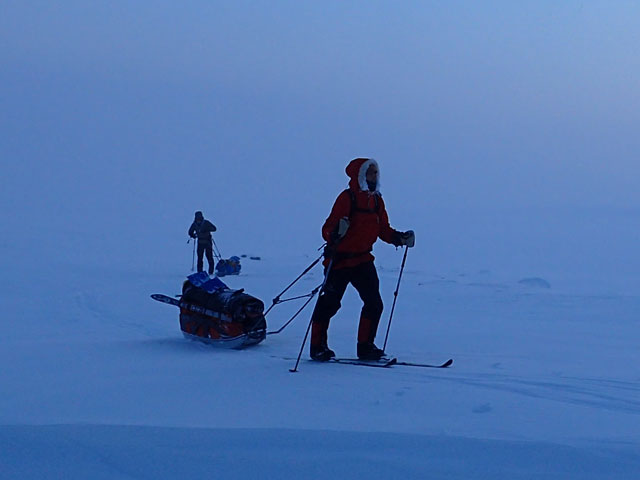
Why ski touring and cross country skiing offer a more environmentally-friendly alternative to downhilll skiing for your next winter holiday.
Climate change is reducing the snowfall in many previously snow-safe resorts, and rising temperatures are leading to dramatic changes in snowfall patterns.
“Alpine areas below 1,600m are now receiving 20 per cent less snow,” says Birgit Ottmer from the Davos-based Swiss Federal Institute for Snow and Avalanche Research.
But interview a cross-section of downhill skiers on the slopes and ask them what they like about skiing, and many are likely to mention something about their love of the outdoors and the beauty of the scenery.

Therein lies the rub. The truth is, downhill skiing can have an enormously destructive effect on the fragile mountain environment:
- Increasing numbers of resorts all over the world are relying on artificially generated snow. For example, in Austria and Italy more than 40% of ski areas now need to make their own snow, and even Swtizerland, where prior to 1990 snow-making was almost unheard of, now uses snow cannons in more that 10% of its ski areas. “Practically no ski area can now survive without artificial snow; you’d face great difficulties if you didn’t have it,” says Marika Zanoletti of the Davos Klosters Ski Company.
- Reliance on snow-making machines carries with it a number of problems. Not only is it a hugely expensive and extremely energy-hungry process, but artificial snow causes long-term damage to the vegetation beneath because of the chemical additives it contains.
- Snow cannons also make it possible to prolong the ski season, further increasing the pressure on the local environment.
- All resorts now use machines to grade the snow. This compacts the snow cover and destroys the vegetation beneath, which may take decades to recover.
- The ever-increasing popularity of downhill skiing creates traffic congestion and pollution in ski areas, new hotel and chalet developments sprawl across previously peaceful mountain villages, and the infrastructure of ski lifts destroys both the visual appearance of the mountainside and its habitat.

As lower altitudes experience problems with snow cover, there is a tendency to move resorts further and further up into the mountains, into areas which are often the last stronghold for threatened species of plants and animals.

In Austria, pressure from the ski industry has resulted in the local authorities lifting a ban on ski resorts in the previously protected area of the Gepatsch glacier. Not that this is a guarantee, as since 1850 Europe has lost almost 50% of its glacier cover. The Swiss resort of Andermatt has even wrapped its glacier in a protective PVC blanket at times to combat the summer melt!
So, can I ski and still be green?
There is an increasing movement in the downhill ski industry towards more responsible practices, and this does hold some hope for the future. Reducing the carbon footprint of your trip and choosing your resort carefully will certainly go some way to greening your ski holiday. Alternatively, DON’T GO DOWNHILL SKIING!!!

Cross-country skiing, ski touring and snowshoeing all have a significantly lower impact on the environment than downhill skiing. They require far less infrastructure, reducing pollution, habitat degradation and energy use. What’s more, being out on your own in the forest with nothing but the crunch of your snowshoes or the “swoosh-glide” of your skis to break the silence is a magical feeling – a TRUE outdoor winter experience!

At Nature Travels we specialize in low-impact, responsible outdoor activities in Sweden, Finland and Norway. Take a look at our range of ski touring and cross country skiing adventures, and discover a new world of winter experience!
Best regards
The Nature Travels Team
